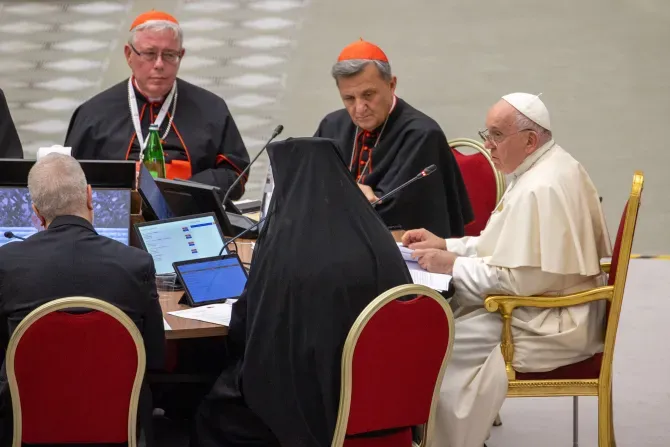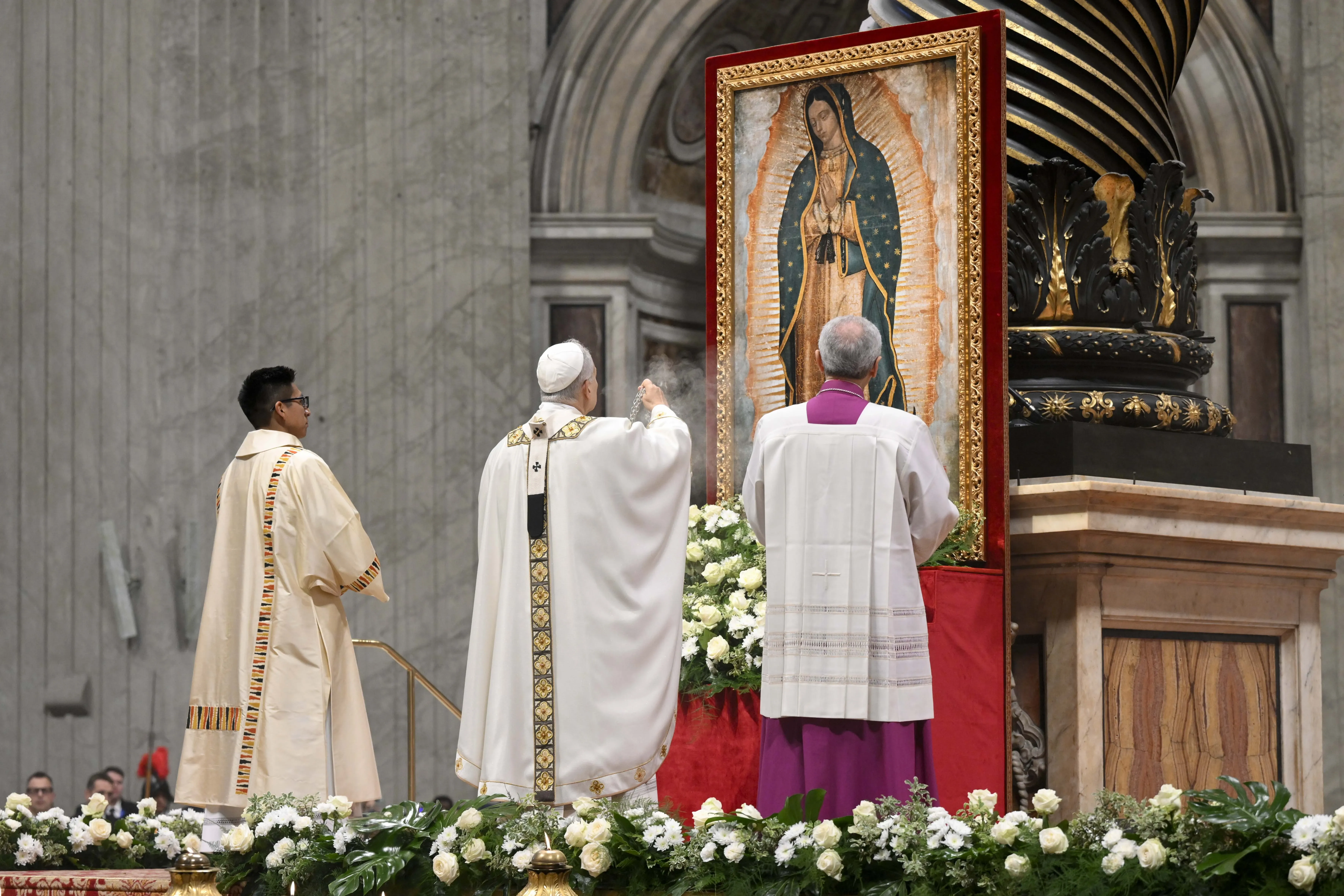“No delegation could ever adequately represent the totality of the people of God, the subject of the ‘sensus fidei,’” or sense of the faithful, said Grech, who heads the Vatican office that organizes the Synod of Bishops. He also added that the synod could not be considered a “full representation” of the Church, because it did not include the full participation of the college of bishops, like in an ecumenical council.
“But these sisters and brothers remind us by their very presence of the unity of the synodal process,” the Maltese prelate said.
The unique setting and layout of the Synod of Synodality — which is being held not in the Synod Hall but in the larger Paul VI Audience Hall — was also a focus of opening remarks.
Hollerich said the decision to have participants seated “not in hierarchical order” but at round tables to facilitate small-group discussion was not a decision made from the top down, but “mirrors the experience of the people of God” who participated in previous stages of the Synod on Synodality. That process began in 2021 and has included diocesan, national, and continental phases.
Even Pope Francis was seated at a round table, albeit at the head of the room and slightly elevated. The pope was joined at his table by key synod organizers, including Hollerich, Grech, synod undersecretary Sister Nathalie Becquart, and Patriarch Ibrahim Isaac Sidrak, the head of the Coptic Catholic Church and the president-delegate for the opening day.
Those who delivered opening remarks, including Pope Francis, did so while seated. Cameras at each table captured the image of those speaking, displaying them not only on a large screen at the front of the room but also on the four displays at each round table.
Hollerich added that “round tables also remind us that none of us is the star in this synod,” stating that the event’s “protagonist is the Holy Spirit.” The cardinal also suggested that bishops who “were not very active” in the preceding stages of the synod “may face challenges” with the layout, while many of the non-bishop members, in contrast, actively participated in the synod’s continental stage.
Synod organizers acknowledged that the process that had led to the present Synod on Synodality had not been without challenges.
Sidrak said that “at the beginning, it was not easy,” as many felt “a little disoriented” by the novelties of a multiyear synodal process that aimed for global participation. Grech also added that some whom he had encountered during earlier stages were “wary” of the process, and even said that his mother had recently asked him “why I ‘waste’ so much [time] in the secretariat offices if it doesn’t help me preach the Gospel.”
“She was right! And I don’t want to forget this question of hers even now that we are called to pause dynamically in prayer and listening for an entire month.”








